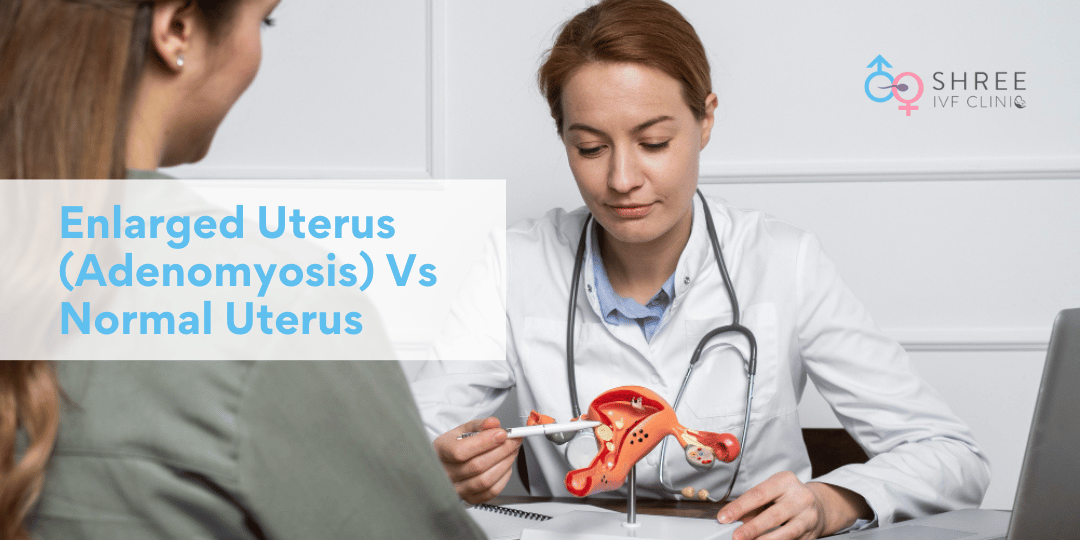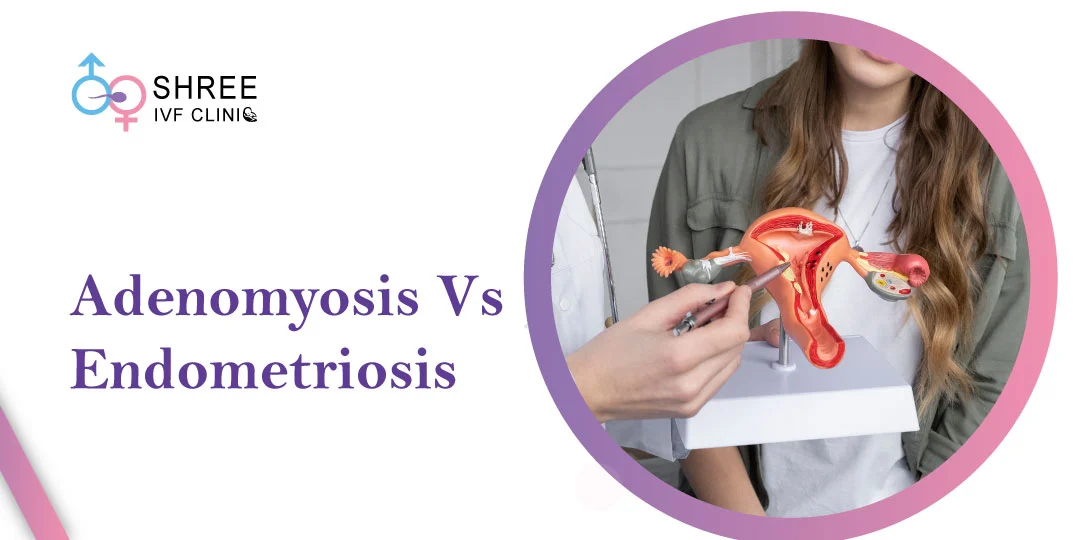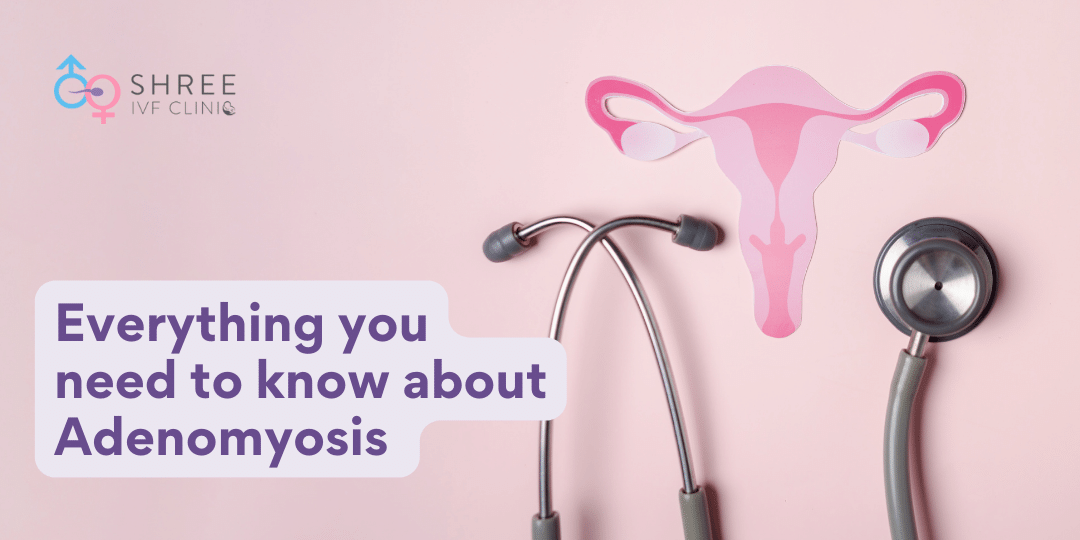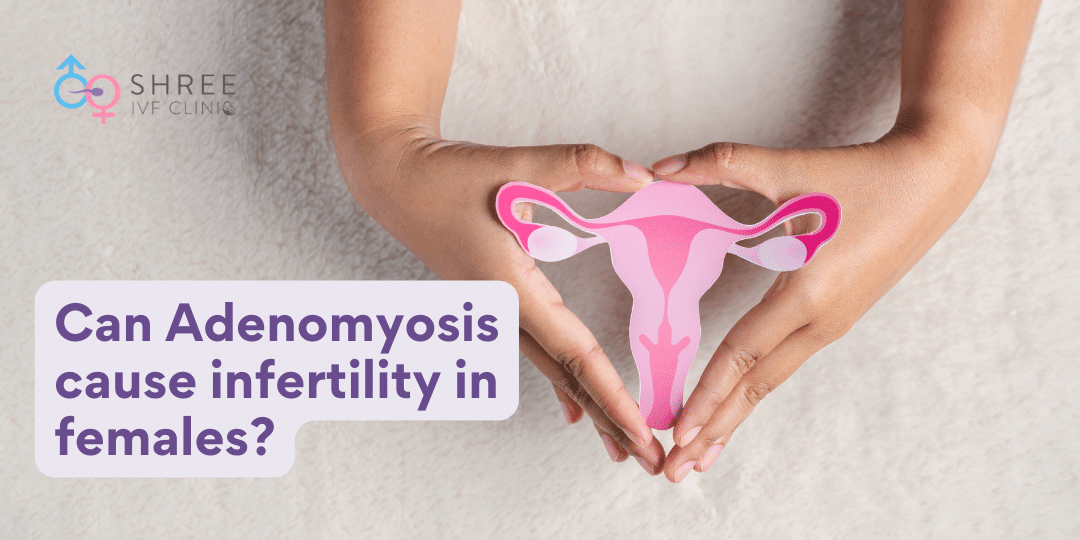Understanding Enlarged Uterus vs Normal Uterus
UPDATED ON 26 DEC. 2023
Adenomyosis is a complex gynaecological condition, where the endometrial tissue – the inner lining of the uterus, infiltrates into the muscle layer of the uterus (myometrium). This infiltration can significantly alter the size and shape of the uterus, leading to a range of symptoms that can affect a woman’s quality of life.
As expert gynaecologists in mumbai with 10+ years of experience, we understand the critical role uterine size plays in diagnosing and managing adenomyosis effectively. Our aim is to provide valuable insights into understanding uterine size in adenomyosis.

AUTHOR
Dr Jay Mehta
Scientific Director & IVF Specialist with 10+ years of experience
CONDITION
GET IN TOUCH ON
What Constitutes a Normal Uterus?
A healthy, normal uterus resembles an inverted pear in shape. Its size, approximately 7.5 cm long, 5 cm wide, and 2.5 cm deep, plays a vital role in the female reproductive system, housing and nourishing the fetus during pregnancy.
However, these measurements represent an average, and the actual size of the uterus can vary among women. Factors such as age, hormonal changes, pregnancy, and overall health can influence the size of the uterus, even in the absence of conditions like adenomyosis.
- Age and Uterine Size
The size of the uterus changes throughout a woman’s life, starting from puberty through the reproductive years and into menopause. It’s normal for the uterus to enlarge during pregnancy and shrink back down postpartum.
However, adenomyosis can influence these dimensions differently at each life stage, often causing significant enlargement during the reproductive years. It’s essential to monitor these changes closely, particularly for women experiencing symptoms of adenomyosis.
How Adenomyosis Impacts Uterine Dimensions?
Adenomyosis causes the endometrial tissue to penetrate the myometrium, leading to an enlarged and often tender uterus. The extent of this enlargement can vary greatly and is usually proportional to the degree of infiltration of the endometrial tissue into the muscular wall. This infiltration can result in severe symptoms like heavy menstrual bleeding, severe abdominal pain, and fertility issues, significantly affecting a woman’s overall health and well-being.
Read more : Is adenomyosis a serious condition?
Normal Uterine Size vs Adenomyosis
In a woman without adenomyosis, the uterine size varies based on factors like age, ethnicity, and overall health. For instance, post-menopausal women typically have smaller uteri due to decreased estrogen levels. However, in the presence of adenomyosis, the uterus often enlarges significantly, becoming soft and bulky.
This enlargement can interfere with fertility and complicate pregnancy and childbirth. Recognising these changes is crucial in diagnosing adenomyosis and managing its symptoms effectively. At Shree IVF Clinic, we’ve observed various degrees of uterine enlargement in our patients, reinforcing the importance of individualised care and tailored treatment plans.
Tests to detect enlarged uterus
Diagnostic imaging techniques like ultrasound, MRI, and CT scans play a critical role in assessing uterine size and diagnosing adenomyosis. These screening scans provide a clear picture of the uterus’s structure, revealing any abnormalities or changes in size that might indicate adenomyosis.
At our Shree IVF Clinic, we use state-of-the-art imaging technologies to capture detailed images of the uterus, ensuring accurate diagnosis, which is the first step towards effective management of adenomyosis.

4,790+
379K+
” Every individual and couple’s journey is unique, and
finding the right solutions tailored to their specific
circumstances can make all the difference “
Living with Adenomyosis
Living with adenomyosis can be challenging due to its impact on physical health and emotional well-being. The pain and discomfort associated with an enlarged uterus can affect daily activities, relationships, and mental health. In addition, the potential fertility issues can cause distress for women planning to conceive. It’s important to seek medical help and emotional support when dealing with adenomyosis.
Fertility Treatments for Women with Adenomyosis
There are several fertility treatments available for women with adenomyosis, ranging from medication to assisted reproductive technologies.
Hormonal therapies can regulate menstrual cycles and reduce adenomyosis symptoms, while fertility drugs can stimulate ovulation and increase chances of conception. Assisted reproductive technologies (ART) like In Vitro Fertilization (IVF) and Intracytoplasmic Sperm Injection (ICSI) provide more direct methods of achieving pregnancy.
At Shree IVF Clinic, we’ve helped many women with adenomyosis conceive successfully using these treatments. Each treatment option has its potential success rates and considerations, which should be discussed thoroughly with your gynaecologist.
Conclusion
In conclusion, Understanding uterine size in the context of adenomyosis is crucial for accurate diagnosis and effective management of this condition. It’s important to note that while an enlarged uterus can be a sign of adenomyosis, it can also be associated with other conditions such as fibroids and polyps.
Therefore, if you have concerns about your uterine health or are experiencing symptoms like heavy bleeding or severe abdominal pain, we encourage you to seek help from experienced gynaecologists. At Shree IVF Clinic, we are committed to providing patient-centred, empathetic, and actionable care, helping you navigate your health journey with confidence.
AUTHOR
Dr Jay Mehta
Scientific Director & IVF Specialist with 10+ years of experience
CONDITION
CALL US 24/7 FOR ANY HELP
GET IN TOUCH ON
Share Article on
Recommended Reading
Difference Between Adenomyosis and Endometriosis
Endometriosis causes tissue to grow outside the uterus, while adenomyosis leads to growth within the uterine muscle
What Causes Adenomyosis? Guide to Causes, Diagnosis & Treatments Available
Demystifing Adenomyosis, providing an in-depth overview of its causes, diagnosis, and treatment options through this article. learn more.
Can Adenomyosis Cause Female Infertility?
Understand the relationship between adenomyosis & infertility, & gain crucial insights and practical advice for women to cope up with it.




